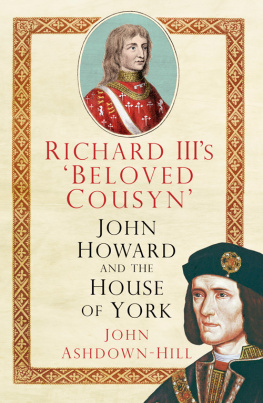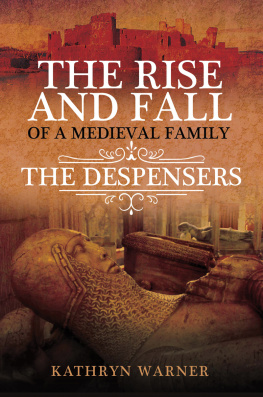


Fonthill Media Language Policy
Fonthill Media publishes in the international English language market. One language edition is published worldwide. As there are minor differences in spelling and presentation, especially with regard to American English and British English, a policy is necessary to define which form of English to use. The Fonthill Policy is to use the form of English native to the author.
Lynda J. Pidgeon was born and educated in England; therefore British English has been adopted in this publication.
Fonthill Media LTD
Fonthill Media INC
www.fonthill.media
First published in the United Kingdom and the United States of America 2019
British Library Cataloguing in Publication Data:
A catalogue record for this book is available from the British Library
Copyright Lynda J. Pidgeon 2019
ISBN 978-1-78155-743-3
The right of Lynda J. Pidgeon to be identified as the author of this work has been asserted by her in accordance with the Copyright, Designs and Patents Act 1988.
All rights reserved. No part of this publication may be reproduced, stored in a retrieval system or transmitted in any form or by any means, electronic, mechanical, photocopying, recording or otherwise, without prior permission in writing from Fonthill Media Limited
Typeset in 10pt on 13pt Sabon
Printed and bound in England
Preface
In September 1464, Edward IV had no choice but to admit to his lords that he had secretly married Elizabeth Wydevile. This unequal marriage of king and commoner subsequently led to the family being seen as manipulative, greedy, and grasping. If this were not sufficient to blacken their reputation, Elizabeth and her mother, Jacquetta, were also charged with witchcraft. When, in 1483, after the untimely death of her husband, it was alleged that Elizabeths two young sons, the Princes in the Tower, had been murdered by Richard III, sympathies might have been expected to change. Gone the manipulative queen to be replaced by the grieving widow, mourning not only the loss of her husband but the death of her sons and brother. Despite these tragedies, the story of the Wydeviles has essentially remained unchanged. To quote Keith Dockray, the Wydeviles have long had a most unsavoury reputation as a family of grasping upstarts who single-mindedly exploited their connections with the crown in a thoroughly blatant and unscrupulous manner.
Rumour aside, what exactly is known about the Wydeviles? Crucially, they seem to have appeared out of nowhere during the fifteenth century, the beneficiaries of two very fortunate marriages, although this is by no means the full story. Despite their position in the later fifteenth century, there are no family archives or large collections of personal papers that can be drawn upon to provide a fuller picture of the Wydeviles. Brief mentions of them can be found scattered across the numerous records of government, a mention here and there, and, frustratingly, in legal cases we only have the opening papers and not the conclusions. Wives, daughters, sisters, and mothers are even more rarely mentioned. From such brief references in the Pipe Rolls, Patent Rolls, Fine Rolls, etc., and later in the chronicles, a faint picture of the early family becomes visible. However, from these sources, we can see a family emerge who did well for themselves in the first few centuries after 1066, rising to baron, then falling back down the social scale into the country gentry. In the fourteenth century, the Northamptonshire branch of the family made the most of their connections, first establishing their position within the county and then within the household of the royal family. This was the springboard for their success in the fifteenth centuryalthough even they could not have foreseen that their royal connections would lead to the crown itself.
Underlying this rise and fall and rise again is the English preoccupation with class and social mobility. Status was a touchy subject; even in the fifteenth century, people were sensitive to the charge of being descended from serfs and made great efforts to prove that they came from freeborn stock. Not only did status matter, but the lack of it, or even the suggestion of the lack of status, could prove to be a useful weapon. It is these sensitivities to status that make it necessary to trace the origins of the Wydevile family. The impression arising in the later fifteenth century was that they were nobodies who, coming from nowhere, were suddenly everywhere, both at the court of Edward IV and married into all the important noble families. A family of arrivistes who did not know their place and who, through the wiles of a beautiful woman, manipulated a young and lusty king. The reality is rather more complicated.
Brought Up of Nought is an attempt to discover more of the familys origins, to find out if they really were the nobodies they are portrayed as, brought up of nought, or if they were like many other families of the fifteenth century (such as the Nevilles) who made equally advantageous marriages but who have not received the same opprobrium as the Wydeviles. A brief look at the familys arrival and establishment in England will be followed by an in depth account of the Wydeviles later reputation, using the chronicles written in the fifteenth and early sixteenth centuries to trace how they were portrayed and how the story of the family and their two remarkable marriages developed.
Acknowledgements
The origins of this book lay in my PhD thesis, completed many years ago. Turning that thesis into a book has taken almost as long again. My grateful thanks are therefore due to Professor Anne Curry who saw me through the lengthy process of my PhD, providing references and translations, advice and chats about the Wydeviles, generally over sandwiches and several cups of coffee. She also kindly read through a draft of the book and offered invaluable suggestions and corrections.
Richard Caryl showed much patience in proofreading both thesis and book, and Elaine Henderson helped with some much-needed editing of the preface and gave some general advice on how to continue when I began to feel bogged down in the detail of the Wydeviles. I was greatly assisted with translation of Italian and Latin texts by Anne Linsley and Lesley Boatwright; both have since sadly died. Annes support and friendship is still missed. Adriana Solari did an additional translation of Cornazzanos poem for me. Dr Barry Lewis provided some useful references to Welsh poems with a translation and helpfully responded to my enquiries about them.
A number of people have helped in providing references: Remy Ambhl, Adrian Bell, Peter Hammond, Michael Hicks, Tig Lang, Joanna Laynesmith, Doreen Leach, Livia Visser-Fuchs, and Chris Woolgarmy thanks to them all for their helpful conversations or email correspondence.
Staff in archives and libraries always proved unfailingly helpful, and I would particularly like to mention the staff at the University of Southampton Archive, Northamptonshire Record Office, and Northampton Library.
I am grateful to the Historic Society of Lancashire and Cheshire for permission to reproduce the drawing of Jacquettas coat of arms and Kent Archaeological Society for permission to reproduce a drawing of the brass of Richard Woodvile.















